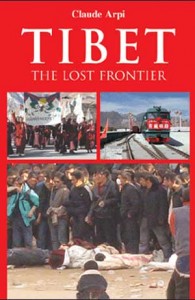Though not in a position to intervene, the Manchus told the British that “no marked separation existed formerly between Tibet and Sikkim” and that the Tibetans regarded the kingdom of Sikkim as an extension of their own country.
The Kashag replied to the Choegyal that there was no harm if Tibet defended its own borders. This time the British were not in a mood to discuss or even negotiate the exact position of the border.
With the pressure mounting, the British positioned more than 2,000 troops of the Sikkim Field Force. The Tibetans sent 900 men as reinforcement under two generals and a minister, Kalon Lhalu.
The British knew perfectly well that Sikkim was a protectorate of Tibet, but they were also aware that Tibet was in too weak a position to defend its rights in Sikkim. At the same time, the Chinese pretended to be overlords of Tibet.
Till the last minute the Choegyal tried to mediate, but each party was determined to show the other that they were within their rights. Unfortunately for the Tibetans, their troops were no match for the British, neither in training, equipment nor discipline. The clash which took place at Lungthur was short and the Tibetans were trounced.
The British had taken two years to throw the Tibetans out of what the latter believed was their own territory. But London used this delay to plan its future strategy. The collateral of this rather small dispute was a new treaty between the British and the Manchu Government regarding Sikkim and Tibet. This would have very serious repercussions on the political relations among India, China and Tibet during the following twenty years.11
The British knew perfectly well that Sikkim was a protectorate of Tibet, but they were also aware that Tibet was in too weak a position to defend its rights in Sikkim. At the same time, the Chinese pretended to be overlords of Tibet. The game was to ask the Chinese to restrain the Tibetans.
It was without doubt the best way to avoid hurting the Chinese feelings while dealing with them and recognizing their overlordship over Tibet. It was also the best way to avoid sending the Manchus into the arms of the Russians. Rumours were rife in Beijing that the Russians were expecting to enter into an alliance with China. The doors were left open for British diplomacy to strike.
| Editor’s Pick |
This came in the form of a Treaty, the “Convention between Great Britain and China relating to Sikkim and Tibet” signed on March 17, 1890 between Great Britain and China, behind the backs of the Tibetans and the Sikkimese.
The boundary of Sikkim and Tibet was defined as follows: “The crest of the mountain range separating the waters flowing into the Sikkim Teesta and its affluent, from the waters flowing into the Tibetan Mochu and northwards into other rivers of Tibet.” The next Article was the most important one for London. China admitted through the Treaty: “…the British Government, whose Protectorate over the Sikkim State is hereby recognised, has direct and exclusive control over the internal administration and foreign relations of that State…”
Rumours were rife in Beijing that the Russians were expecting to enter into an alliance with China. The doors were left open for British diplomacy to strike.
The formal take-over of Sikkim was complete, thanks to a few Tibetans who had crossed over a border pass they believed to be their own.
The Tibetans were deeply disturbed by the Convention on Sikkim and Tibet signed by the Chinese and the British; they regarded it as a breach of the Patron-Priest relationship.
The Treaty of 1890 along with the fact that the British (and the Chinese) had decided not to inform the Tibetans about its contents, which was of direct concern to them, was the last straw for the Tibetans. There was henceforth no alternative but to show both parties that their terms were unacceptable.
One point was clear for the Tibetans—they had lost their protector. The events which followed should be seen more in terms of the Tibetans seeking to find a new protector.
 Another factor, which played a role in this complex game was the visit of Prince Henri d’Orléans to Tibet in 1888; he declared that France was ready to have diplomatic relations with Tibet. He even promised the Tibetan Government: “We, the French can save Tibet from the British threat. France and Russia have concluded an alliance and, we are now the strongest power in the world.”12
Another factor, which played a role in this complex game was the visit of Prince Henri d’Orléans to Tibet in 1888; he declared that France was ready to have diplomatic relations with Tibet. He even promised the Tibetan Government: “We, the French can save Tibet from the British threat. France and Russia have concluded an alliance and, we are now the strongest power in the world.”12
To be continued…




